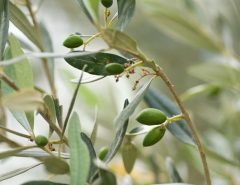Water primrose (Ludwigia spp.) is a persistent aquatic weed that can quickly take over ponds, lakes, and waterways. Its invasive nature can harm native aquatic ecosystems, making it essential to control and eliminate this plant. In this article, we’ll explore various methods astrategies to get rid of water primrose effectively.
There are 7 Effective Methods and Strategies to Get Rid of Water Primrose
Understanding Water Primrose
Before diving into the eradication methods, it’s crucial to understand the water primrose and its growth habits. Water primrose is characterized by its green or reddish stems, lance-shaped leaves, and yellow flowers. This aggressive aquatic plant forms dense mats on the water’s surface, choking out other aquatic plants and disrupting the ecosystem.
Manual Removal
Manual removal is one of the most straightforward methods to control water primrose. However, it can be labor-intensive, especially if the infestation is substantial. Here’s how to do it:
- Use a rake or net to scoop out the water primrose mats.
- Pull out the plants by hand, ensuring you remove the roots.
- Dispose of the removed plants away from the water to prevent reinfestation.
Cutting and Harvesting
Frequent cutting and harvesting can help weaken water primrose populations. Follow these steps:
- Use scissors or pruning shears to cut the plants just above the waterline.
- Dispose of the cuttings away from the water, ensuring they cannot float back.
Biological Control
Introducing natural predators or herbivores that feed on water primrose can be an effective biological control method. One such option is the water primrose weevil (Neohydronomus affinis), which can significantly reduce water primrose populations.
Herbicides
Herbicides are chemical solutions that can be used to control water primrose. It’s essential to use herbicides registered for aquatic use and follow all safety precautions:
- Glyphosate-based herbicides are commonly used to control water primrose. Apply them according to the product label instructions.
- Be cautious not to overspray, as non-target plants can be harmed.
Biological Herbicides
Biological herbicides contain living organisms that target specific plants like water primrose. One such option is the mycoherbicide Colletotrichum gloeosporioides f. sp. ludwigiae, which can infect and kill water primrose.
Mechanical Removal
Mechanical methods such as the use of aquatic weed cutters or harvesters can be effective for large-scale water primrose infestations. These machines can efficiently cut and remove the plants from the water.
Preventative Measures
Preventing the spread of water primrose is crucial to long-term control. Here are some preventive measures:
- Clean boats, equipment, and fishing gear to remove any water primrose fragments.
- Avoid introducing water primrose from one body of water to another.
- Monitor and manage water primrose regularly to catch infestations early.
FAQs
What is the most effective method to get rid of water primrose?
The most effective method to get rid of water primrose depends on the extent of the infestation. For small-scale infestations, manual removal is often effective. This involves using tools like rakes or nets to scoop out the mats of water primrose and pulling the plants out by hand, making sure to remove the roots. For larger infestations, mechanical removal using specialized equipment, biological controls like introducing water primrose weevils, or herbicides registered for aquatic use may be necessary. The choice of method should be based on the specific conditions of your waterbody and local regulations.
Can I use chemical herbicides to eliminate water primrose, and are they safe for the environment?
Yes, chemical herbicides can be used to eliminate water primrose, but it’s crucial to use herbicides specifically designed for aquatic environments and follow all safety guidelines and regulations. Glyphosate-based herbicides are commonly used for water primrose control. These herbicides can be effective when applied correctly, targeting the plant without harming non-target species. However, they should be used with caution to prevent any adverse environmental impact. Always read and follow the product label instructions, and consider alternative methods if possible.
What can I do to prevent water primrose from coming back after removal?
Preventing the reestablishment of water primrose is essential for long-term control. To prevent its return:
Regular Monitoring:
Continuously monitor your waterbody for any signs of water primrose resurgence. Early detection can help you take action before it becomes a significant problem.
Proper Disposal:
Ensure that any removed water primrose plants are disposed of away from the waterbody to prevent reinfestation. Composting is not recommended for water primrose.
Boat and Equipment Maintenance:
Clean boats, fishing gear, and any equipment used in the water to remove any plant fragments. This will help prevent the spread of water primrose to other areas.
Avoid Introduction:
Be cautious not to introduce water primrose from one body of water to another inadvertently. Check your equipment and boat thoroughly before moving them to a new location.
Consider Barrier Plants:
Planting native aquatic species as barriers can help prevent water primrose from returning by competing for resources and creating less hospitable conditions for its growth.
Conclusion
Getting rid of water primrose can be challenging, but with the right methods and strategies, it’s possible to control and even eliminate this invasive aquatic weed. Whether you choose manual removal, cutting and harvesting, biological controls, herbicides, or preventative measures, the key is persistence and consistency in your efforts to protect native aquatic ecosystems.
Tags: creeping primrose, primrose transplanting, water primrose, water primrose control




Leave a Reply